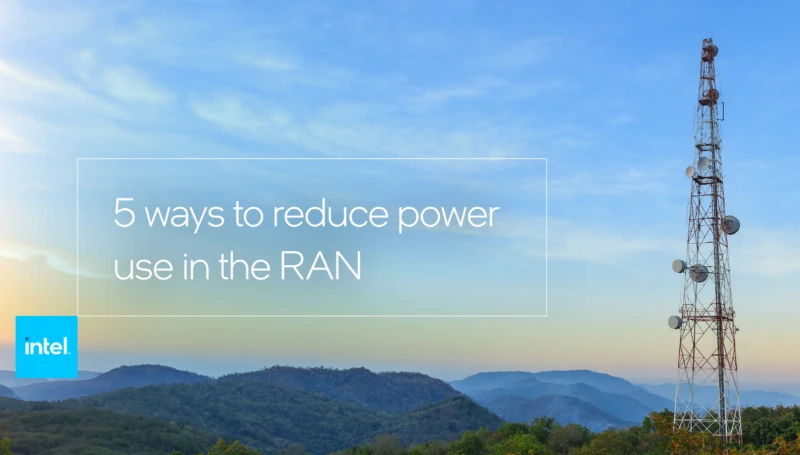Reducing Power Consumption in RAN
Published on 21 Jun 2024

Mobile network operators (MNOs) are facing pressure to reduce their environmental impact and lower energy costs.A noteworthy parcel of the vitality utilized is expended by the Radio Access Network (RAN). Here, we'll explore ways to optimize RAN to save energy.
Optimizing Processor Resources
Virtualized RAN (vRAN) uses advanced general-purpose processors (GPPs) to handle demanding workloads. Choosing processors that are the right size for the vRAN can help to save power.
- Matching Processor Capacity: vRAN requires processors with low latency, high performance, and deterministic capabilities. Features like Massive MIMO and beamforming further increase processing needs. By selecting processors that deliver the necessary performance while keeping power consumption low, MNOs can optimize their energy use.
- Intel® Xeon® Scalable processors: These processors are available in a range of configurations to suit different vRAN capacity needs. The 4th generation processors offer up to 2x the capacity of previous generations, while the Intel® vRAN Boost feature helps to deliver additional power savings.
Reducing Power with Processor Features
Modern processors come with features that can help to reduce power consumption:
- P-States: These are performance states that allow the processor to adjust core frequency and voltage based on workload requirements. Lower workloads can benefit from reduced core frequency, which saves power without affecting performance.
- C-States: These are power management states that allow cores to enter sleep states when they are idle. C0 is the active state, while higher C-state numbers represent deeper sleep states with lower power consumption but longer wake-up times. By intelligently using C-states, cores can be put to sleep during low-demand periods to conserve energy.
Pool Workloads to Save Power
Network infrastructure is typically sized to handle peak usage. However, traffic can vary significantly depending on the time of day or location. Advanced DU pooling allows for dynamic allocation of resources. During low-traffic periods, unused servers can be powered down entirely. Additionally, workload consolidation can free up cores within a server, allowing unused cores to enter sleep states.
Using AI for Power Optimization
Artificial intelligence (AI) offers new possibilities for optimizing RAN power consumption. AI software can analyze network traffic patterns and dynamically allocate resources to meet demand. Here are some examples:
- P-State Management: AI can adjust processor frequency (P-states) based on predicted network load.
- C-State Management: AI can put cores into sleep states (C-states) during low-demand periods.
- Radio Sleep Modes: AI can intelligently activate or deactivate radio carriers or even entire radios to save power, without impacting user experience.
Conclusion
By implementing these strategies, MNOs can significantly reduce energy consumption in their RANs. This not only helps to save money on electricity bills but also contributes to a more sustainable future.
Download the white papers below to learn more about how Intel® technologies can help you reduce power consumption in your RAN.
You May Also Like: Improving Sustainability in the 5G Network: How Intel is Helping Operators Go Green
